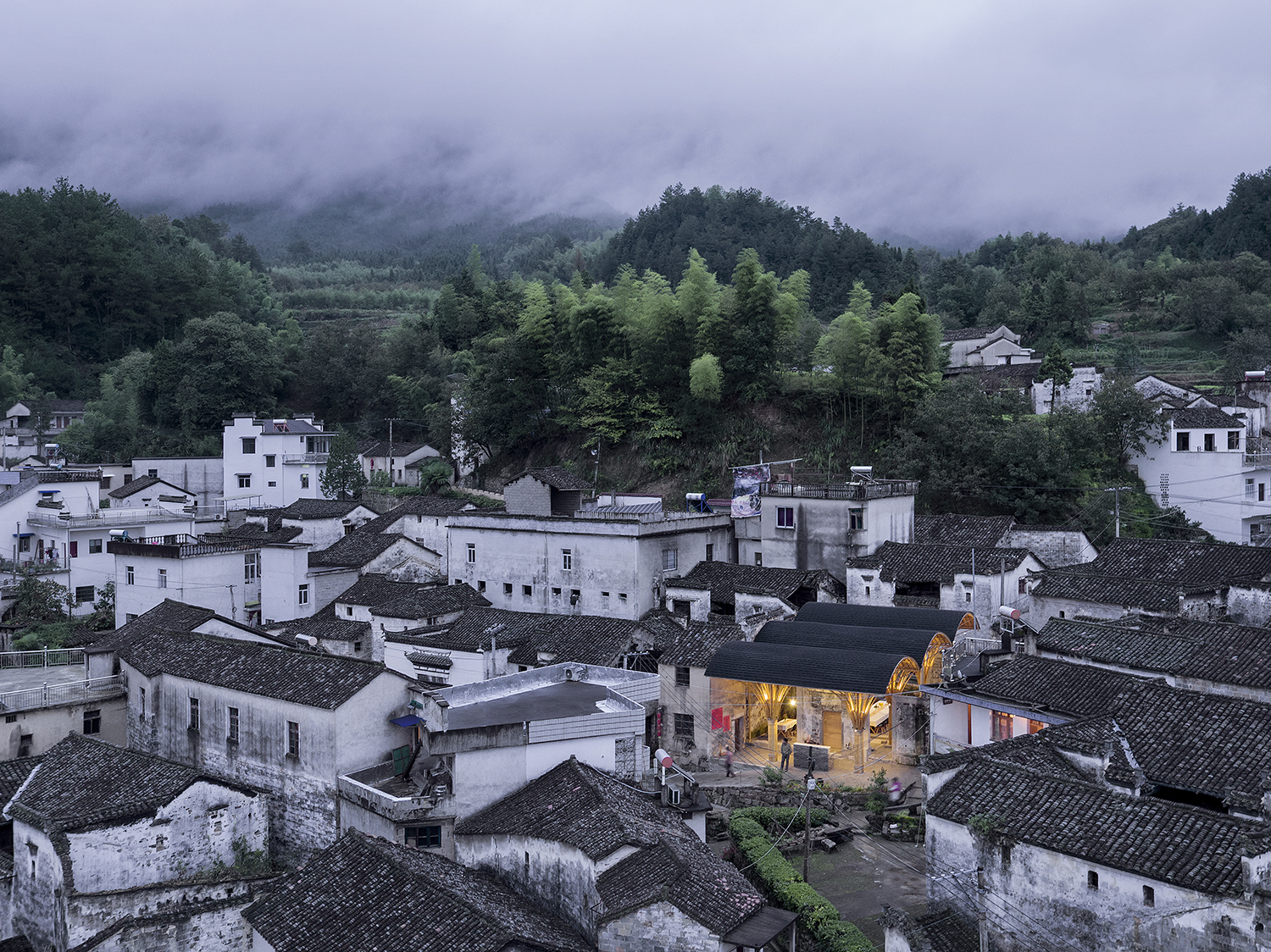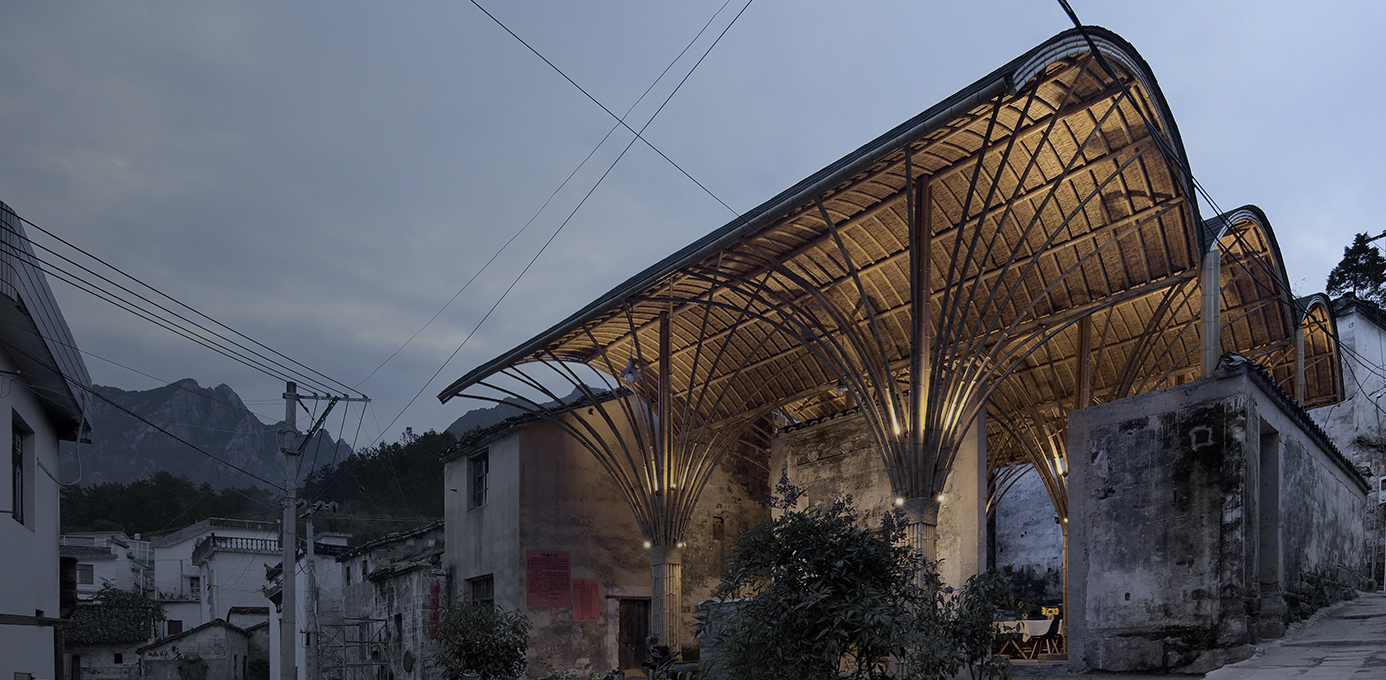Perhaps the greatest quality of the A+Awards is its ability to spotlight incredible design and creativity in places where it might otherwise be missed. One such place is Shangcun, a remote village surrounded by mist-laden mountains in eastern China. When the designers at Beijing-based firm SUP Atelier were asked to create a new public gathering place for this small community, they turned to that which they know best — local materials and vernacular construction techniques.
The resulting structure — a beautifully detailed bamboo pavilion supporting a series of vaulted roofs — is a new hub for the local community, which utilizes it for a wide array of activities. The project’s role as a social catalyst earned it an A+Award in the Architecture +Community category, but the ingenuity of its structure was deserving of more — Village Lounge of Shangcun is one of five recipients of a 2019 Special Honoree Project of the Year award.
By day, the Lounge is an airy yet sheltered space populated by locals serving meals, selling crafts, rehearsing music and attending outdoor movie screenings. At twilight, the structure becomes a beacon, emanating a warm light in a manner akin to a fireplace within a mountainside cabin. Activities can continue into the night, with people of all ages feeling safe and welcome in the proverbial heart of the village.
Architizer spoke with Professor Yehao Song, Founder and Principal Architect of SUP Atelier, about the project, the challenges involved in bringing it to life, and what the Special Honoree award means to his firm.
Paul Keskeys: Village Lounge of Shangcun stands out from its surroundings with its innovative vaulted form and use of materials. What key features of the site inspired the design?
Prof. Yehao Song: Shangcun is just one of the common traditional villages in the Yangtze River Delta, rich in history yet with no so-called historical buildings in the village. In fact, what touched me so deeply was the status quo of the house on the site.
The ruined house was right in the center of the village, where the villagers live, yet it was left abandoned with broken walls and collapsing structures. This scene pricked me, together with the desire of the villagers to have some kind of public space regardless its size.

Your use of bamboo for the project continues your work with this distinctive material. What draws you to bamboo and what are the challenges in using it for construction?
Seeking appropriate, sustainable design solutions in China and around the world is the mission of SUP Atelier. From our point of view, we believe that materials like timber, bamboo and rattan are excellent materials in terms of sustainability for the future.
That is why bamboo is so attractive to us. In this case, bamboo can meet the demands of fast construction, bending freely according to design. Shangcun belongs to one of the regions in China with the richest resource of bamboo. The main challenge comes from the maintenance of the pavilion, not from design and construction.
What other construction details of the project are you particularly proud of?
In addition to the techniques of bamboo tying and joining, I think there are two impressive connections that are designed by non-architects. First is the concrete framework that reinforces the broken brick walls. The concrete is cast in a not-very-professional way, yet the expression of the surface of the concrete is so amazing that it blends in with the existing molded white wall.
Second is the tile laying on the concrete beam, following the local traditional in that region without architects’ involvement. These two are a natural manifestation and contribute to the perfect combination of new construction and existing ones. What we were trying to deliver is something that the architects did not deliberately pursue, and so it became an uncontrolled, beautiful piece of work.
How has the Village Lounge impacted the residents of Shangcun?
In terms of residents’ living, the building provides a space for them to gather, holding various activities including the village banquet, outdoor movies and folk music rehearsals. It becomes a recreational space for them to spend their leisure time here. On top of that, the villagers manage the lounge as restaurant & native products store to generate more income and thus boast the economy of the village.
The income generated is partly used to maintain the building. The building creates a value to the villagers not only in terms of economy and living; it also helps in connecting them to the society outside the village, as after the building is renovated, carnivals and academic visits are held there.
What does winning an A+Awards Building of the Year Award mean to you?
It is a great honor to me and my colleagues. We admire the goals of A+Awards, which encourage cultural diversity, concentrating on quality of design and the potential of design to improve lives.
Hit the button below to see every A+Award winner and finalist in this year’s incredible competition:
